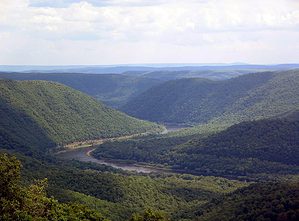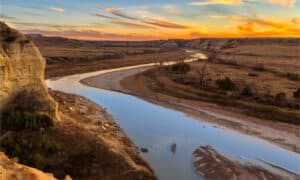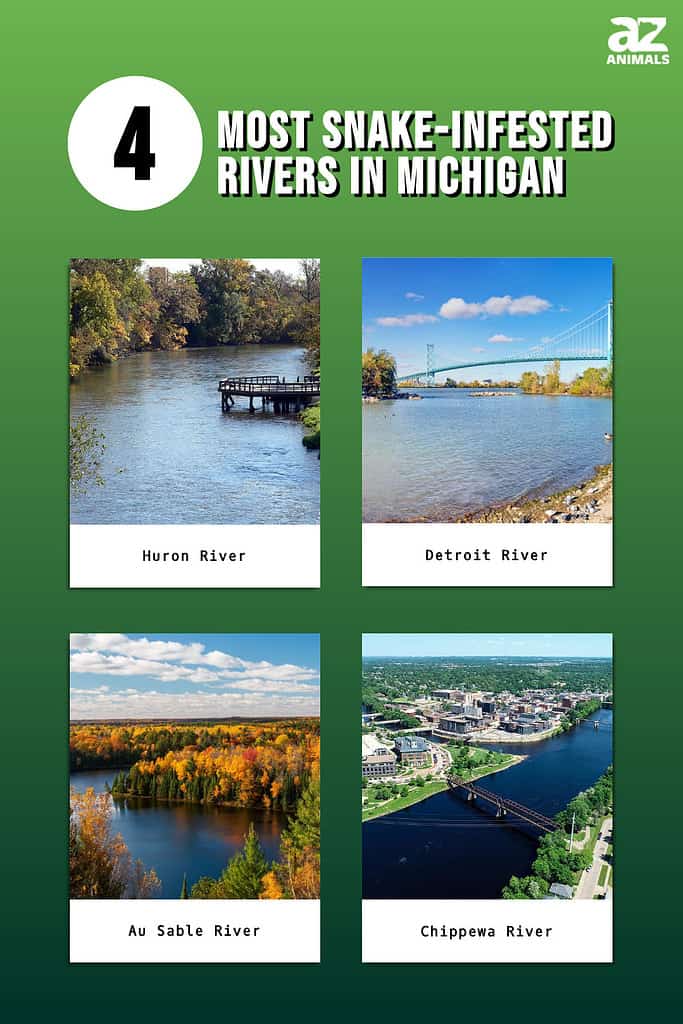
Water Snakes in Michigan
True watersnakes are in the Nerodia genus. They’re semiaquatic, have keeled scales, and like to eat fish and amphibians. There are a couple of watersnake species in Michigan:
- Northern watersnake (Nerodia sipedon sipedon)
- Copper-bellied watersnake (Nerodia erythrogaster neglecta)
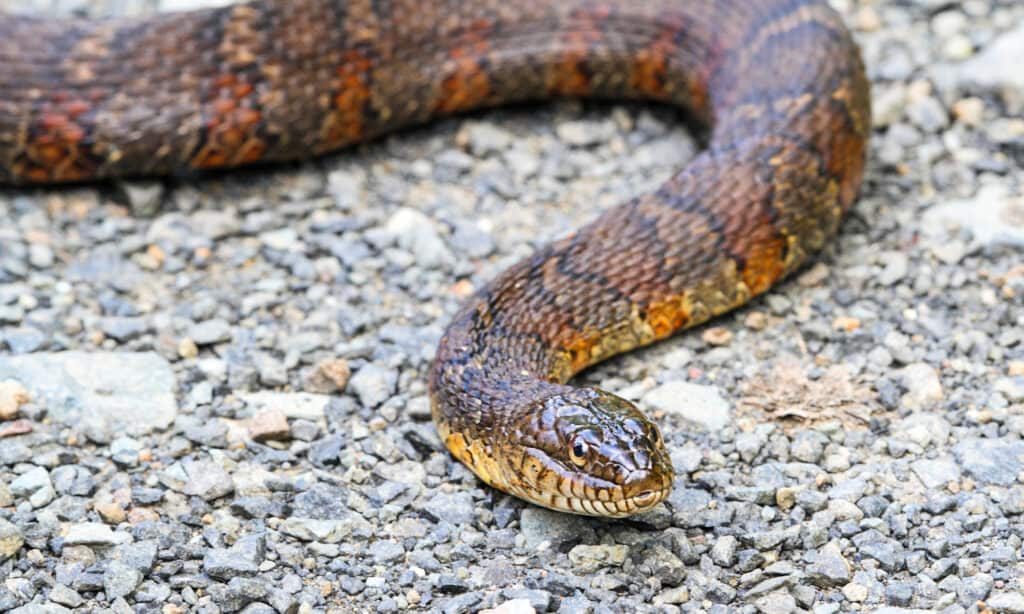
Northern watersnakes are one of the most widespread watersnakes in North America.
©Steve Byland/Shutterstock.com
You’ll find copper-bellied watersnakes in a small area of southeast Michigan on the lower peninsula. Northern watersnakes are more widespread and easier to find throughout the state.
Although these are the only “true” watersnakes, there are other species that spend much of their time in or near the water:
- Eastern garter snake (Thamnophis sirtalis sirtalis)
- Butler’s garter snake (Thamnophis butleri)
- Queen snake (Regina septimvittata) — rare!
- Red-bellied snake (Storeria occipitomaculata)
- Dekay’s brownsnake (Storeria dekayi)
- Kirtland’s snake (Clonophis kirtlandi)
Eastern Massasauga: The Only Venomous Snake in Michigan
In the snake-infested rivers in Michigan, there is only one venomous snake. It is the Eastern Massasauga. It’s a small rattlesnake species that prefers marshy lowlands, which is why it gets a mention here. They’re more likely to be found near wet places.
Fortunately, these little rattlesnakes aren’t aggressive. However, they are endangered and extremely rare in Michigan, so sightings are few and far between.
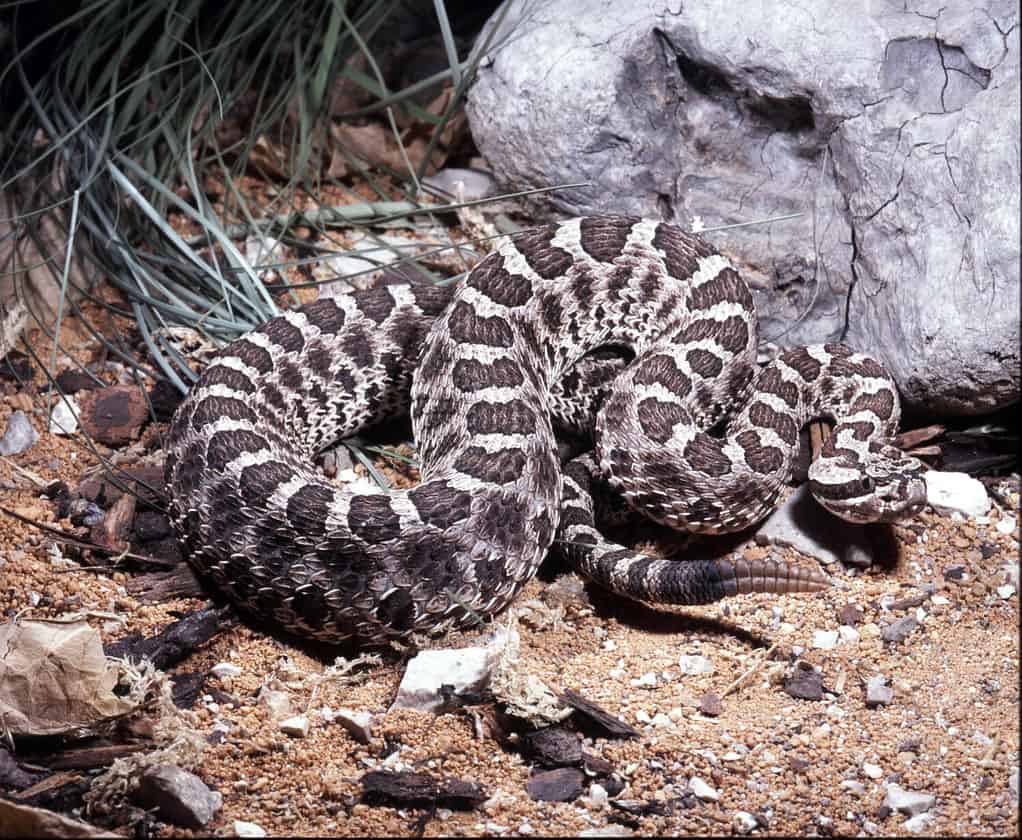
Eastern massasaugas tend to like wetter areas near marshlands.
©Vladislav T. Jirousek/Shutterstock.com
The 4 Most Snake-Infested Rivers in Michigan
As creepy as they can be, snakes are nearly everywhere! They keep rodent populations under control and prevent them from overrunning the environment. Most of the time, snakes try their best to stay out of your way. The legless reptiles have absolutely zero interest in you because you are too big to eat. And that makes you a threat to their safety.
As far as whether a river or other location is snake-infested, that’s a somewhat vague term that can mean different things to different people. Some people feel like seeing just two or three snakes in a day out on the river makes it snake-infested. Others disagree.
However you define snake-infested, we found the Michigan rivers with the largest number of snake sightings reported on iNaturalist.org.
1. Huron River (Lower Peninsula)
For clarity, there are two Huron Rivers in Michigan — one in the upper peninsula and the one we’re looking at, which is in the lower peninsula. This Huron River has loads of snakes and you could call it snake-infested; it has more than its share of snake sightings submitted on iNaturalist.org. It flows for about 130 miles, beginning in the Huron Swamp, winding its way to Lake Erie.
The river’s slow-moving water makes it attractive for canoeing and kayaking. However, that same slow water flow makes it a prime bit of real estate for snakes — Eastern Massasauga rattlesnakes have a pretty solid population in addition to eastern and Butler’s garter snakes, Dekay’s brownsnake, and northern watersnakes. This makes Huron River one of the snake-infested rivers in Michigan.
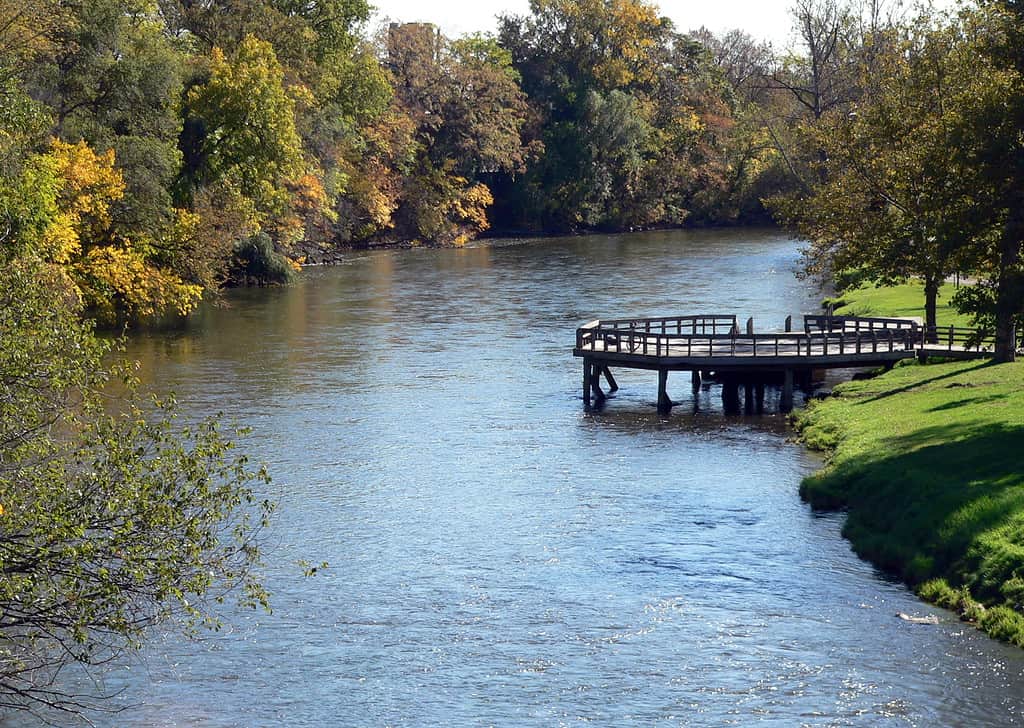
The Huron river flows through Riverside Park in Ypsilanti, MI.
©Cmadler / CC BY-SA 3.0 – License
2. Detroit River
Once polluted and dangerous to human and wildlife health, the Detroit River is a success story. Through a series of cleanup projects, the water is cleaning up nicely and several species that had been absent from the 28-mile stretch of water between Lake Claire and Lake Erie is positively brimming with life.
The most common snake here is the eastern garter snake, the nominate common garter snake subspecies. However, it’s not the only snake slithering along the Detroit River! Visitors may also find northern watersnakes, Dekay’s brownsnakes, and red-bellied snakes.

The Detroit River runs 28 miles along the U.S. and Canadian border.
©iStock.com/Simplyphotos
3. Au Sable River
The Au Sable River is one of Lake Huron’s main tributaries. It begins in north-central Michigan, winding its way through lower Michigan for 138 miles to Lake Huron. The river is popular for fly-fishing and canoeing but also has several dams located along its length.
The death-feigning eastern hognose snake lives here, as do plenty of garter snakes. Additionally, you’ll find northern watersnakes, and even the venomous eastern massasauga will make an appearance somewhere in or near the lake.
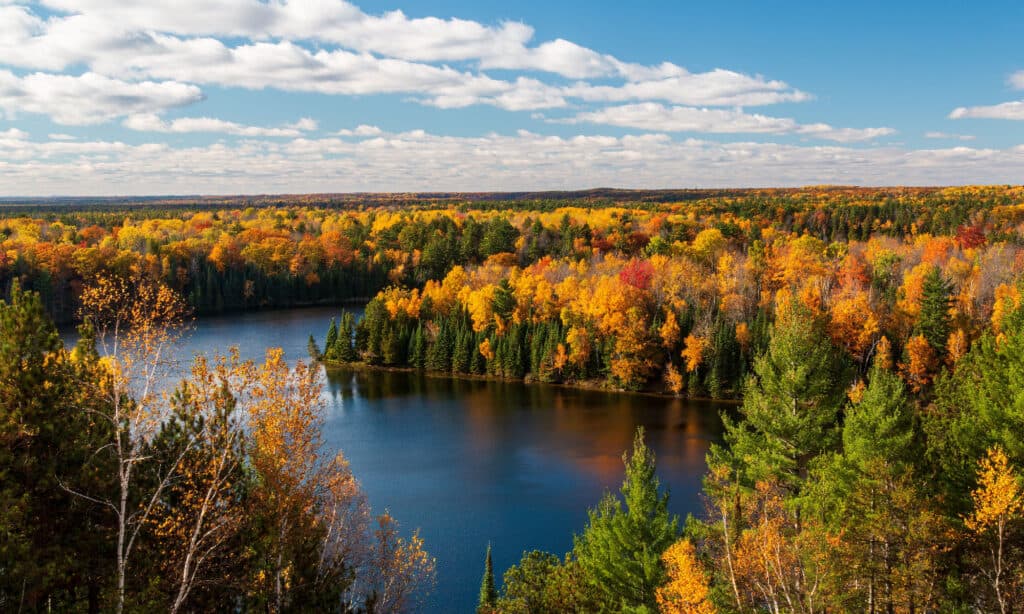
The fall foliage on islands in Lake Huron is spectacular.
©iStock.com/Paul Massie Photography
4. Chippewa River
At a little over 91 miles long, the Chippewa River isn’t as long as some, but is significantly longer than others. This river drains into the Tittabawassee River, which then drains into the Saginaw River. This slow-moving river is perfect for kayaking and canoeing on a lazy Sunday afternoon. The beautiful scenery and active wildlife around the river make it an attractive location!
Snakes around here include the ever-present eastern garter snake, the eastern hognose snake, northern watersnakes, eastern fox snakes, and a few others. Is this river snake-infested? Perhaps — but perhaps the rodent population is under control too. It’s all in the perspective!

The Chippewa River is full of snakes.
©Matthew A Reddy/Shutterstock.com
Other Animals
Of course, no river system is complete without a host of different animal species! Michigans’ upper and lower peninsulas are home to hundreds of species including rodents, birds, fish, and more.
Double-crested Cormorant Nannopterum auritum
With a nearly four-foot wingspan and adult black plumage, the double-crested cormorant is a spectacular sight above lakes and rivers. These birds mainly eat fish and catch prey by swimming and diving.
Their population is widespread across much of North America. During mating season, the adults develop a double crest of black and white feathers, which is where they get their name.
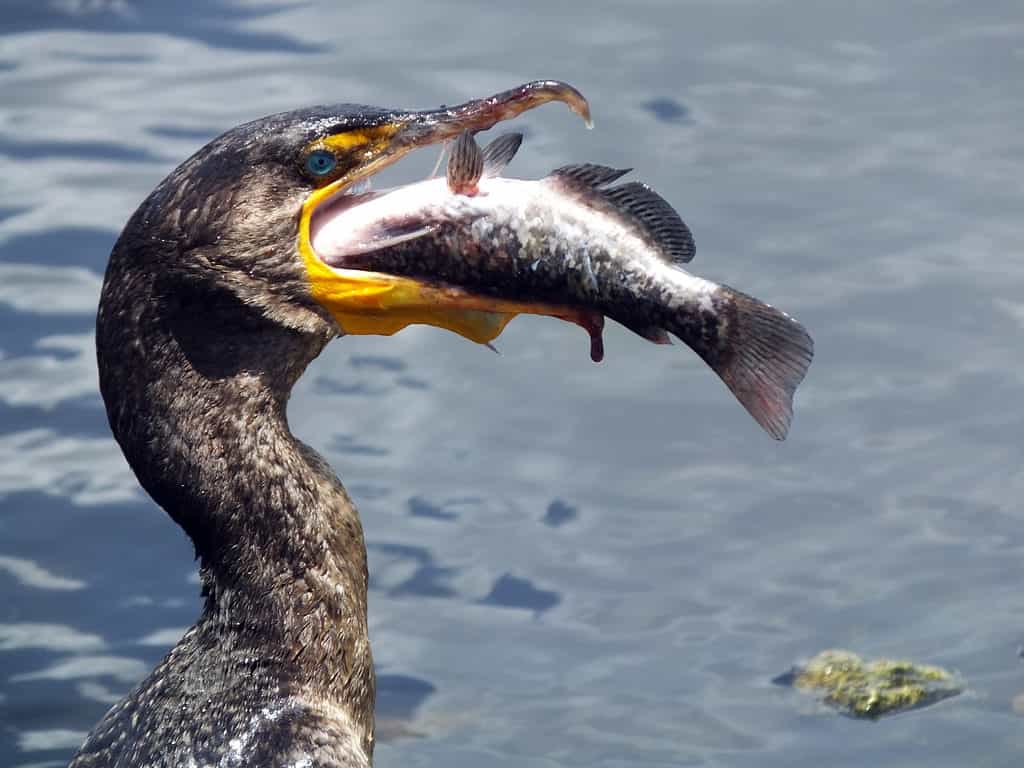
Double-crested Cormorant with catch.
©iStock.com/passion4nature
Northern Walking Stick (Diapheromera femorata)
You might think that seeing a stick walking by itself is a thing of nightmares. However, the northern walking stick is an insect with an extremely elongated body. They mostly eat the leaves from trees, where they eat the tissue between the leaf veins — turning the leaves into leaf skeletons.
Walking sticks are pretty common throughout their North American range, but that’s assuming you are able to spot one. They blend nearly perfectly and look like any other twig.
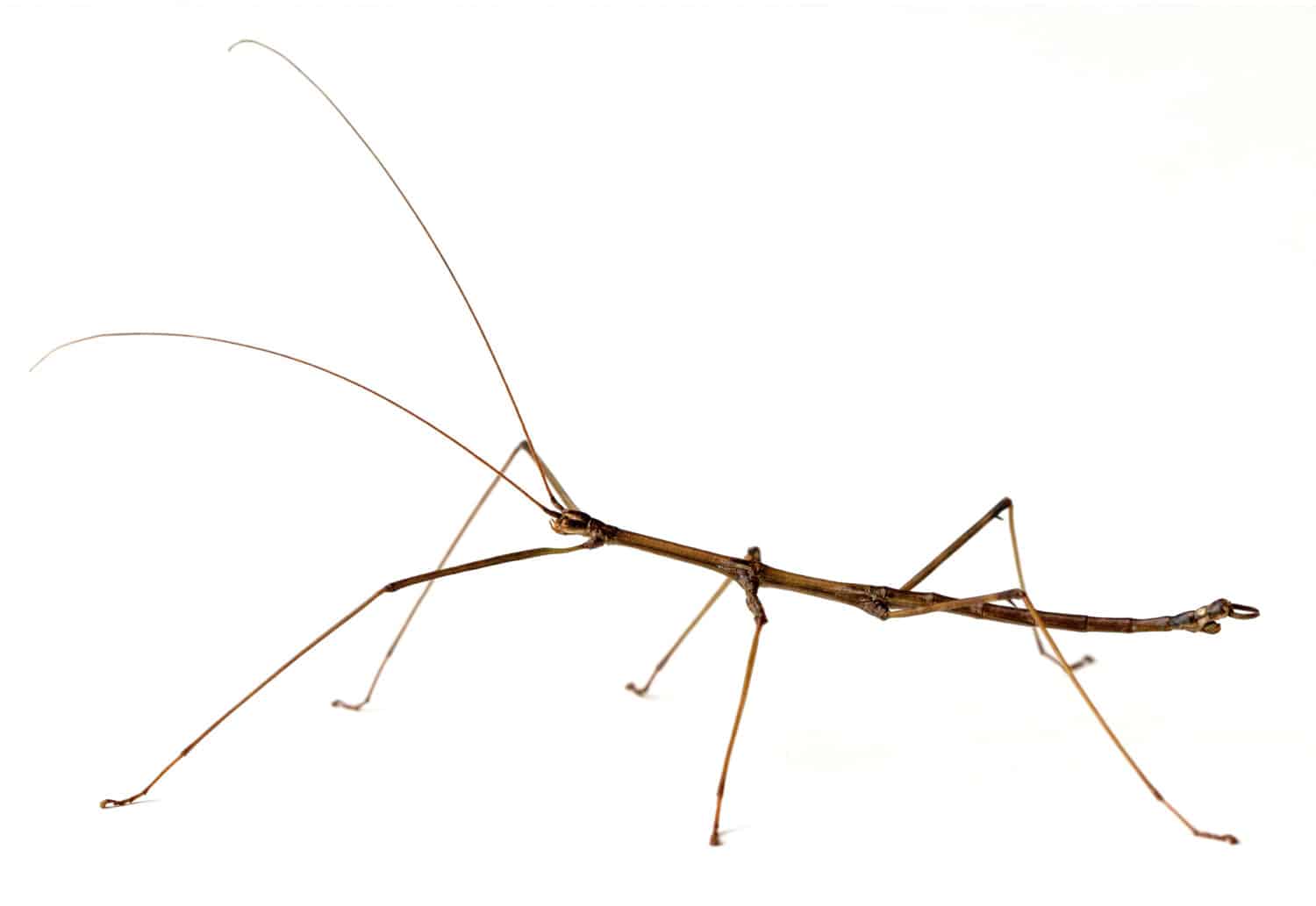
Northern walking stick is common in North America. Image: Melinda Fawver, Shutterstock
©Melinda Fawver/Shutterstock.com
Coyote (Canis latrans)
Coyotes are among the most successful predators. These highly adaptable canids live everywhere in North America with the exception of some of the more barren arctic regions.
They mainly eat smaller prey like rabbits, mice, and other small mammals. However, coyotes also eat snakes and anything else they can catch.

Coyotes live in Michigan and eat mice, snakes, and small mammals.
©Warren Metcalf/Shutterstock.com
The photo featured at the top of this post is © K Quinn Ferris/Shutterstock.com
Thank you for reading! Have some feedback for us? Contact the AZ Animals editorial team.




